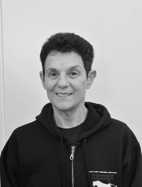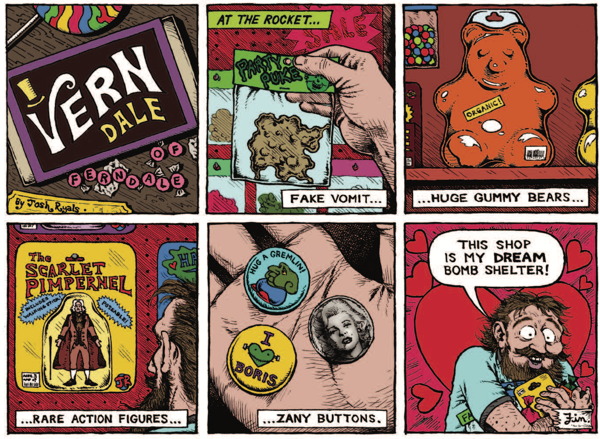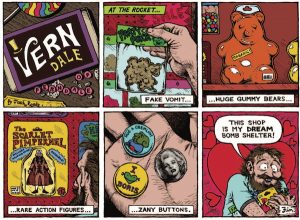By Jeannie Davis
I recently bought a new car. Yep, it was time to trade in my 2005 Subaru, with 26,000 miles, for a new chariot. My feelings were definitely mixed. After all, we had been through a lot together. How many flowers and pots had my little buddy carted home? I re-member campaign time, with tons of signs crammed into the back. Greg Pawlica and I always had such fun, driving around and placing the signs in lawns. I have a few memories but not a lot, because I am not a good driver and my friends always prefer to drive.
So, I was ambivalent. I was going to have to change, and change is a four-letter word to seniors. I knew where all the buttons were, and what they did. The radio presets hadn’t changed in six years, nor had the seat position or the mirrors. Yikes!
However, I soldiered through the credit checks and the appraisal on my little buddy. I signed all the papers, and made my final selection. At last came the moment of truth. I got into the driver’s seat, with Nichole (my wonderful sales-person) in the passenger seat.
This is when I learned that a radio isn’t just a radio, it also answers my phone, has a complicated thing called a “play list,” tells me when I get an e-mail, where I can get gas or food, and even delivers the weather. At this point, Nichole noticed my glazed eyes and said there were several features but perhaps now was not the time. She referred me to the manual, which equals War and Peace in size. She gallantly set up my phone so I could answer it on something called “blue tooth.” I didn’t have the heart to tell her that I rarely answer my cell phone anyway because, by the time I figure out how to answer it, the caller has given up.
Finally, I couldn’t put it off any longer. I bravely drove off the lot with the new car, drove home, and spent the rest of the day on the couch, utterly exhausted.
The next day, it was time for a road test. I planned on being really brave, and going as far as the bird seed store. I managed to start the thing, and even adjusted the seat. However, when I went into reverse, the oddest thing happened! There, on that little screen on the dash was a picture of my driveway in back of me! I am not a total babe in the woods – I had seen this feature in Dan Martin’s car as a passenger but never as a driver. I was so distract-ed that I almost sideswiped a tree. Okay, got past that, and onto the road. I figured a little music couldn’t hurt, so I hit the radio button and soon was motoring gently along Woodward listening to Bach. A pleasant interlude, until the radio informed me that Craig Covey had posted on Facebook, as had Jean Russell. Like I care! What was this? After a few more blurbs, I turned the radio off, but did that stop the nonsense? No, my radio continued to inform me of Facebook posts, and e-mails.
I arrived at the bird seed store, made my purchases, and told the girl that I could carry both bags out to my car. I am strong, but, my downfall came when attempting to open the hatch. After fiddling with the dam key fob and tugging at the handle, the girl from the store came out and did something magical, opened my rear, stowed my bags, and returned to her perch inside the store.
I arrived home without further incident, poured a drink, and pouted. I know I am going to have to open the manual and learn how everything works, but I am dreading it. After all, I have learned other things, how hard can it be? Maybe by the time you read this, I will be expertly handling this annoyance on wheels. But if you see me driving with one hand and randomly poking at buttons with the other, perhaps you could help me out.
Change! Who needs it? However, I do like the color.

 of Mejishi Martial Arts on Nine Mile Road. As an all-ages teacher, Jaye worries that the loss of this space will make it difficult for students to be picked up or dropped off from the building.
of Mejishi Martial Arts on Nine Mile Road. As an all-ages teacher, Jaye worries that the loss of this space will make it difficult for students to be picked up or dropped off from the building.
 ear. On Nine Mile Road, Affirmations, the community center for the LGBT community, feels safe enough there to provide a safe space for those who elsewhere would be under threat. And, those who aren’t, often are allies and are proud of having such a center in our area.
ear. On Nine Mile Road, Affirmations, the community center for the LGBT community, feels safe enough there to provide a safe space for those who elsewhere would be under threat. And, those who aren’t, often are allies and are proud of having such a center in our area.
 left) means the sweater pieces were cut from large bolts of knit fabric, and if you try to reuse that yarn, every row will be a separate piece. Look for seams that look like the sweater was handmade (like on the right). Remove the seam thread, clip the yarn at the very bottom, and start raveling. I used to bother winding the yarn in a ball, even blocking the kinks out of it, but no longer. A piece of knit fabric is easier to handle than a ball of yarn, and it feels pretty radical to rip a row or two off a former sweater and instantly turn it into a sock or a mitten. The kinkiness of already-knitted yarn is not noticeable as you work. You can make a lot of socks or mittens from a $2 dollar sweater. Almost-free wool socks are radical.
left) means the sweater pieces were cut from large bolts of knit fabric, and if you try to reuse that yarn, every row will be a separate piece. Look for seams that look like the sweater was handmade (like on the right). Remove the seam thread, clip the yarn at the very bottom, and start raveling. I used to bother winding the yarn in a ball, even blocking the kinks out of it, but no longer. A piece of knit fabric is easier to handle than a ball of yarn, and it feels pretty radical to rip a row or two off a former sweater and instantly turn it into a sock or a mitten. The kinkiness of already-knitted yarn is not noticeable as you work. You can make a lot of socks or mittens from a $2 dollar sweater. Almost-free wool socks are radical.
